Articles

LucasArts.com 20th Anniversary History Feature Part Four: The Next Generation, 1999 - 2002
This is the final installment of a four-part history of LucasArts. The information in this story is based on company documents, historical publications from other developers and publishers, and past and present employee recollections.
The turn of the millennium ushered in an exciting new chapter for LucasArts. First, the release of the Star Wars®: Episode I film in May 1999 gave the LucasArts designers characters, worlds and events to use as inspiration for a host of new Star Wars games. During this era, LucasArts also expanded on well-known Star Wars franchises -- such as X-Wing®, Rogue Squadron®, and Jedi Knight® - while also introducing successful new franchises such as Star Wars Starfighter® and Star Wars Galactic Battlegrounds™. Combined with the power of the next generation game systems, Star Wars games took on an even more movie-like appearance. More than ever, the games began to present gameplay scenarios that directly mirrored what could be seen on the silver screen.
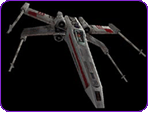
At the same time, LucasArts continued its rich heritage of building games based upon its original properties, including the venerable Monkey Island® series. And in early 2002, LucasArts began to announce exciting new original games that would appear in 2003 and beyond. Those recently revealed games, such as continuations to the Full Throttle® and Sam & Max™ series, further underscored LucasArts' long-standing commitment to develop games based on both licensed and original properties.
Adventures
- Escape from Monkey Island (November 2000, PC, PlayStation 2)
- Indiana Jones® and the Infernal Machine® (November 1999, PC, Nintendo 64)
The Monkey Island series returned in November 2000 but this time, Guybrush Threepwood had gone 3D! Escape from Monkey Island - the fourth in the long-running series - was the first fully 3D Monkey Island game and the debut of LucasArts original adventures to the next generation game console. Threepwood's follies began shortly after his honeymoon with Governor Elaine Marley-Threepwood. Once the newlyweds arrived on Melee Island, Guybrush found that Elaine had been declared dead. What's more, the Governor's mansion was scheduled for demolition! Armed with his sharp wit, Guybrush set out on a mission to get to the bottom of yet another Caribbean pirate mystery.

Another famous LucasArts hero also returned during this era: Indiana Jones. Indiana Jones and the Infernal Machine was a real-time 3D action/adventure game set in 1947 during the Cold War. The player, as Indy, raced around the globe to thwart the Soviet's frantic search for parts to the mysterious Infernal Machine. The game included action sequences such as an off-road Jeep chase and a rollercoaster-like mine car ride along with Indy's trademark wit and whip. In spring 2003, Indiana Jones will return in his next interactive adventure: Indiana Jones and the Emperor's Tomb™.
Star Wars Titles
Console:
- Star Wars: Episode I Racer™ (May 1999, Nintendo 64, Dreamcast, PC, Mac)
- Star Wars: Episode I The Phantom Menace™ (May 1999, PC, PlayStation)
- Star Wars: Episode I Jedi Power Battles® (April 2000, PlayStation, Dreamcast)
- Star Wars: Episode I Battle for Naboo™ (December 2000, Nintendo 64, PC)
- Star Wars Demolition® (November 2000, PlayStation, Dreamcast)
As Star Wars: Episode I premiered in movie theatres, LucasArts brought out two games that allowed players to immerse themselves even deeper in the first Star Wars saga. Star Wars: Episode I Racer took the thrilling Podrace sequence from the film and turned it into a fast-paced racing game. In Star Wars: Episode I Racer, players took the reigns of a turbine-driven chariot and raced 4 feet above the ground at 600 miles per hour just like in the film. The game expanded considerably upon the sport of Podracing by adding 21 different race courses across 8 different worlds.
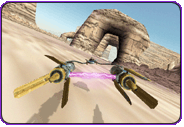
Whereas Star Wars: Episode I Racer took a key action sequence from the film and adapted it for the interactive medium, Star Wars: Episode I The Phantom Menace gave players the opportunity to re-experience the film's narrative in an interactive form. The game began with Obi-Wan and Qui-Gon's mission to deal with the greedy Trade Federation. During this third-person 3D adventure game, players took on the roles of Obi-Wan, Qui-Gon, Queen Amidala and even Captain Panaka, while traveling to locations such as Tatooine, Coruscant and the streets of Mos Espa.
In spring of 2000, Star Wars: Episode I Jedi Power Battles debuted taking inspiration from the best-loved classic arcade games of the past, and allowed players to battle their way to victory as one of five Jedi Knights. Star Wars: Episode I Battle For Naboo featured an original storyline and let players battle the Trade Federation in multiple vehicles, such as the Naboo Starfighter, a heavily armored battle STAP and the powerful Gian Speeder. Later in 2000, Star Wars: Demolition also let players pilot classic Star Wars vehicles as part of brutal vehicular destruction contests organized by Jabba the Hut.
PC:
- Star Wars: Episode I Insider's Guide™ (June 1999, PC, Mac)
- Star Wars: X-Wing Alliance™ (March 1999, Windows 95/98)
- Star Wars: Force Commander® (March 2000, Windows 95/98)
- Star Wars Galactic Battlegrounds™ (November 2001, PC)
- Star Wars Jedi Knight II: Jedi Outcast™ (March 2002, PC, Xbox, GameCube)
Along with releasing Star Wars: Episode I-related games, LucasArts also gave players a chance to see the making of the original prequel with Star Wars: Episode I Insider's Guide. This follow-up to Star Wars: Behind the Magic™ offered an interactive behind the scenes look at the creation of the movie.
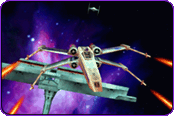
Following in the footsteps of the hugely successful X-Wing and TIE Fighter games, Star Wars: X-Wing Alliance, the final game of the Star Wars: X-Wing series, was the next combat simulation released for the PC. With enhanced graphics and fully 3D cockpits, Star Wars: X-Wing Alliance had more than 50 single player missions and five multiplayer missions. Fans remember the game because it allowed them to finally fly the Millennium Falcon in the assault on the second Death Star, the climactic moment from film Return of the Jedi.
For players with interest in a new type of Star Wars gaming experience, LucasArts began exploring the popular real-time strategy genre. Star Wars: Force Commander, a 3D RTS, gave players the opportunity to command troops in epic Star Wars conflicts like the Battle of Hoth. It was soon followed by Star Wars Galactic Battlegrounds, which spanned the entire Star Wars saga. The game used an enhanced version of the Age of Empires strategy game engine.
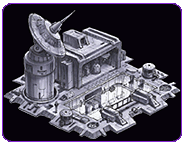
Gamers could play as any of six key civilizations: Galactic Empire, Rebel Alliance, Wookies, Gungans, Royal Naboo and the Trade Federation. In May 2002, LucasArts released the Star Wars Galactic Battlegrounds: Clone Campaigns™ expansion pack that enlarged the game's already vast scope by including large-scale battle scenarios from the Star Wars: Episode II film.
In 2002, famed LucasArts hero Kyle Katarn made his triumphant return in Star Wars Jedi Knight II: Jedi Outcast. This first person action game, which was subsequently released for game consoles, used the popular Quake III: Arena game engine. This time, Katarn was forced to revisit his dark past to save the future of the galaxy from a nefarious Dark Jedi. With locations from Cloud City to the Jedi Knight Academy on Yavin 4, Jedi Outcast included a wide range of unique Force powers and full multiplayer support. Upon its release in March 2002, Jedi Knight II climbed to the top of the sales charts and became one of the best selling first-person action games of the year.
Next Generation Consoles:
- Star Wars Starfighter™ (February 2001, PlayStation 2, PC, Xbox)
- Star Wars Obi-Wan™ (December 2001, Xbox)
- Star Wars Jedi Starfighter™ (March 2002, PlayStation 2, Xbox)
- Star Wars Rogue Squadron II: Rogue Leader™ (November 2001, GameCube)
- Star Wars Racer Revenge™ (February 2002, PlayStation 2)
- Star Wars: The Clone Wars™ (October 2002, GameCube, PlayStation 2)
- Star Wars Bounty Hunter™ (November 2002, GameCube, PlayStation 2)
LucasArts' first game for PlayStation 2 was Star Wars Starfighter. A flight-action game inspired by classic LucasArts space simulations such as X-Wing, the game featured an original plot and three unique spacecraft to fly: The N-1 Starfighter from Star Wars: Episode I; the Havoc, a powerful bomber; and the nimble Guardian Mantis. The game took players through intense outer space and planetary combat missions. The final showdown involved the climatic assault on the Droid Control Ship, as seen in Star Wars: Episode I. Star Wars Starfighter was well regarded for its stunning landscapes and easy-to-learn flight control scheme. A special edition of the game also was released for Xbox featuring five bonus missions and exclusive two-player split-screen multiplayer dogfights. The first LucasArts game to be released on Xbox was Star Wars Obi-Wan, a third person action game where players could utilize Obi-Wan's Force powers and acrobatic abilities.
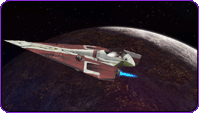
As George Lucas put the finishing touches on the Star Wars: Episode II: Attack of the Clones film, LucasArts gave gamers a sneak preview of the film with Star Wars Jedi Starfighter, the follow-up to Star Wars Starfighter. The game released two months before the film and let players pilot the sleek Jedi Starfighter. Star Wars Jedi Starfighter maintained the same look and feel as its predecessor, but it also included a number of new features. Specifically, players could use Force powers in the cockpit, such as summoning Force lighting to destroy enemies and Force reflex to slow down the speed of the game while the player continued to operate at full speed. Set across 15 land and space missions, Star Wars Jedi Starfighter also included two-player co-operative missions.
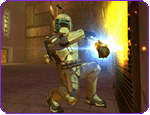
Another flight action game released during this era set during the original Star Wars trilogy was Star Wars Rogue Squadron II: Rogue Leader. A launch title for the Nintendo GameCube, the game was universally heralded for its spectacular movie-like visuals and Dolby Pro Logic II surround sound. A follow-up to the hit Nintendo 64 game Star Wars Rogue Squadron, Star Wars Rogue Squadron II: Rogue Leader allowed players to engage in the best of classic Star Wars flight battles like the Death Star trench run and the epic conflict on the ice planet of Hoth. Star Wars Rogue Squadron II: Rogue Leader went on to become the most successful third-party game during GameCube's launch.
In early 2002, LucasArts revisited another of its classic series for a sequel: Star Wars Racer Revenge. Set eight years after the original Star Wars Racer game, Sebulba was dead-set on avenging Anakin Skywalker's dramatic upset victory. With 16 different podracers, Star Wars Racer Revenge upped the ante by allowing players to engage in combat while racing. This time, players could attempt to run opponents into walls and take them out of the race before the finish line was even in sight.
After the release of Star Wars: Episode II, LucasArts brought out two additional games that told parts of the Star Wars lore not fully explored in Attack of the Clones. Star Wars: The Clone Wars cast players in the role of a Jedi Knight leading the Republic Army into the greatest ground battles of the epic Clone Wars.
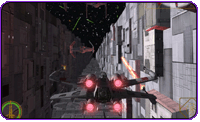
As either Obi-Wan, Mace Windu or Anakin Skywalker, players battled across six immense worlds, such as the war-torn plains of Geonosis and the ice-covered ruins of Rhen Var. Star Wars: The Clone Wars also featured a split-screen multiplayer mode for up to four players.
Finally, Star Wars Bounty Hunter allowed players to take on the role of the most ruthless and feared mercenary in the Star Wars galaxy: Jango Fett. This third-person action game merged events from the film Star Wars: Episode II with the backstory of how Jango became the most famous bounty hunter of them all. During the game, Jango set out in search for a deranged Dark Jedi. As part of his quest, he could use special equipment like a jetpack to traverse the game's vast puzzle-filled environments. Star Wars Bounty Hunter also was remarkable because two of LucasArts' sister companies were involved in its production. Visual effects powerhouse Industrial Light & Magic worked on the game's CG cinematic sequences, and Skywalker Sound was responsible for the game's sound design.
This concludes the History of LucasArts, written in celebration of the rich legacy of games from LucasArts during the past twenty years.